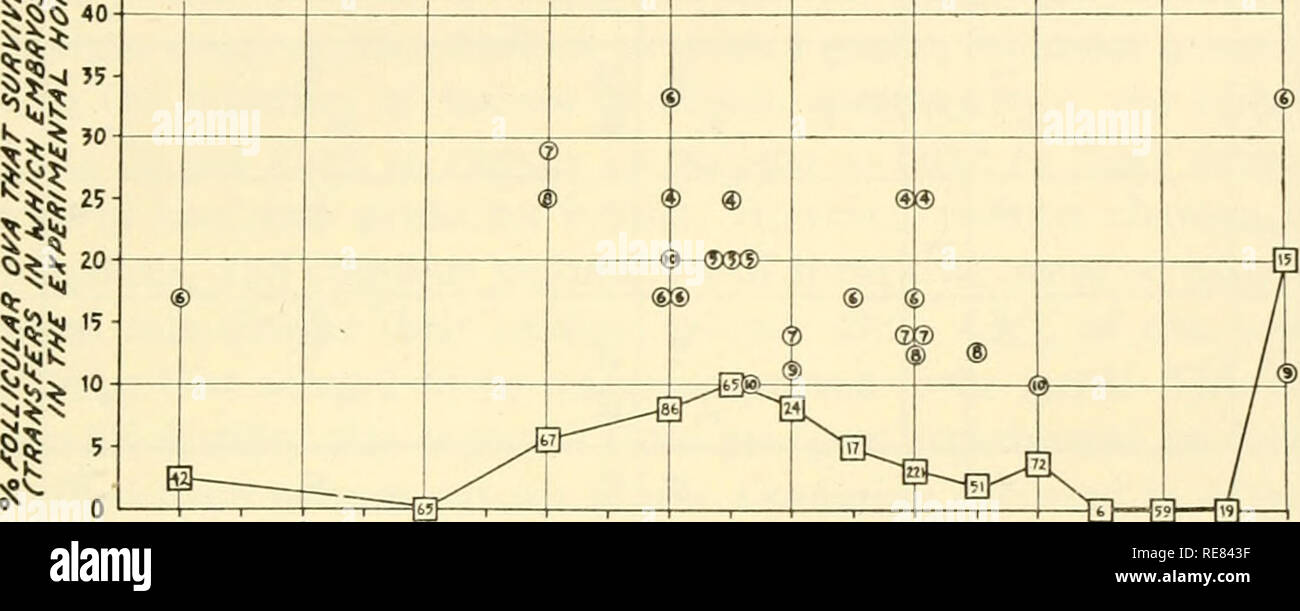. Control of ovulation; proceedings of the conference held at Endicott House, Dedham, Massachusetts, 1960. Ovulation -- Regulation. Follicular Development, Ovular Maturation, Ovulation in Ovarian Tissue 31 Approximately 6 follicular ova were pipetted into each of 184 ovarian bursas of previously mated albino recipient animals. The method for injecting ova is illustrated in Fig. 15. In a previous experiment (1), when 130 developing follicular ova were removed from the ovaries of normal adult animals six hours or less before the expected time of ovulation, and were then transferred into the burs

Image details
Contributor:
The Book Worm / Alamy Stock PhotoImage ID:
RE843FFile size:
7.1 MB (187.1 KB Compressed download)Releases:
Model - no | Property - noDo I need a release?Dimensions:
2495 x 1001 px | 21.1 x 8.5 cm | 8.3 x 3.3 inches | 300dpiMore information:
This image is a public domain image, which means either that copyright has expired in the image or the copyright holder has waived their copyright. Alamy charges you a fee for access to the high resolution copy of the image.
This image could have imperfections as it’s either historical or reportage.
. Control of ovulation; proceedings of the conference held at Endicott House, Dedham, Massachusetts, 1960. Ovulation -- Regulation. Follicular Development, Ovular Maturation, Ovulation in Ovarian Tissue 31 Approximately 6 follicular ova were pipetted into each of 184 ovarian bursas of previously mated albino recipient animals. The method for injecting ova is illustrated in Fig. 15. In a previous experiment (1), when 130 developing follicular ova were removed from the ovaries of normal adult animals six hours or less before the expected time of ovulation, and were then transferred into the bursas of 19 recipient animals, 44 (34%) of the ova were fertilized and developed to term embryos. "JT" ® No. Qia in iQcb transfap El No. all OvQ +rans-fcrr4d. 6 6 10 12 H 15 16 17 18 19 20 Zl 22 27 24 NO. HM. ELAPSED FOLLOWING CHORIONIC GONADOTROPHIN INJECTION Fig. 16. The fertility of follicular rat ova taken from ovaries transplanted to the eyes of recipient rats of a different strain. The data are from Table I. The figures within the circles are the numbers of ova in each transfer in which one or more of the transferred ova developed to term. The figures in the squares represent the number of all ova transferred into recipient bursas at a given hour following chorionic gonadotropin injection. Our present experience with the fertility of follicular ova obtained from eye transplants is not nearly this encouraging (Table 1). When 809 maturing ova from eye transplants were transferred to 131 bursas, only 36 (4.5 %) developed into term embryos. The optimal stage of folHcular development was between the fourteenth and sixteenth hours following the administration of HCG (Fig. 16), but even at this time only 10% of transferred ova survived. The results of individual experiments were quite variable, and the apparent high fertility of ova occurring 24 hr after HCG was probably a chance occurrence. This was a very rigorous test for fertility, with many chances for ova to be lo